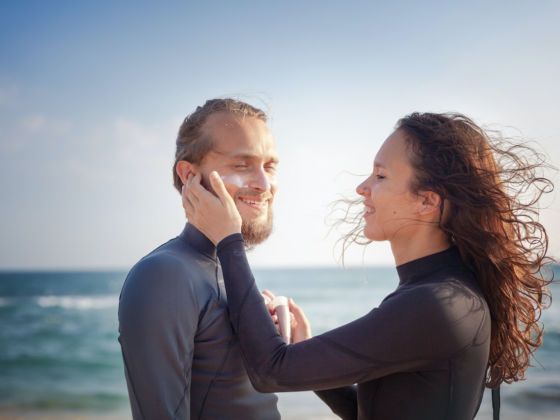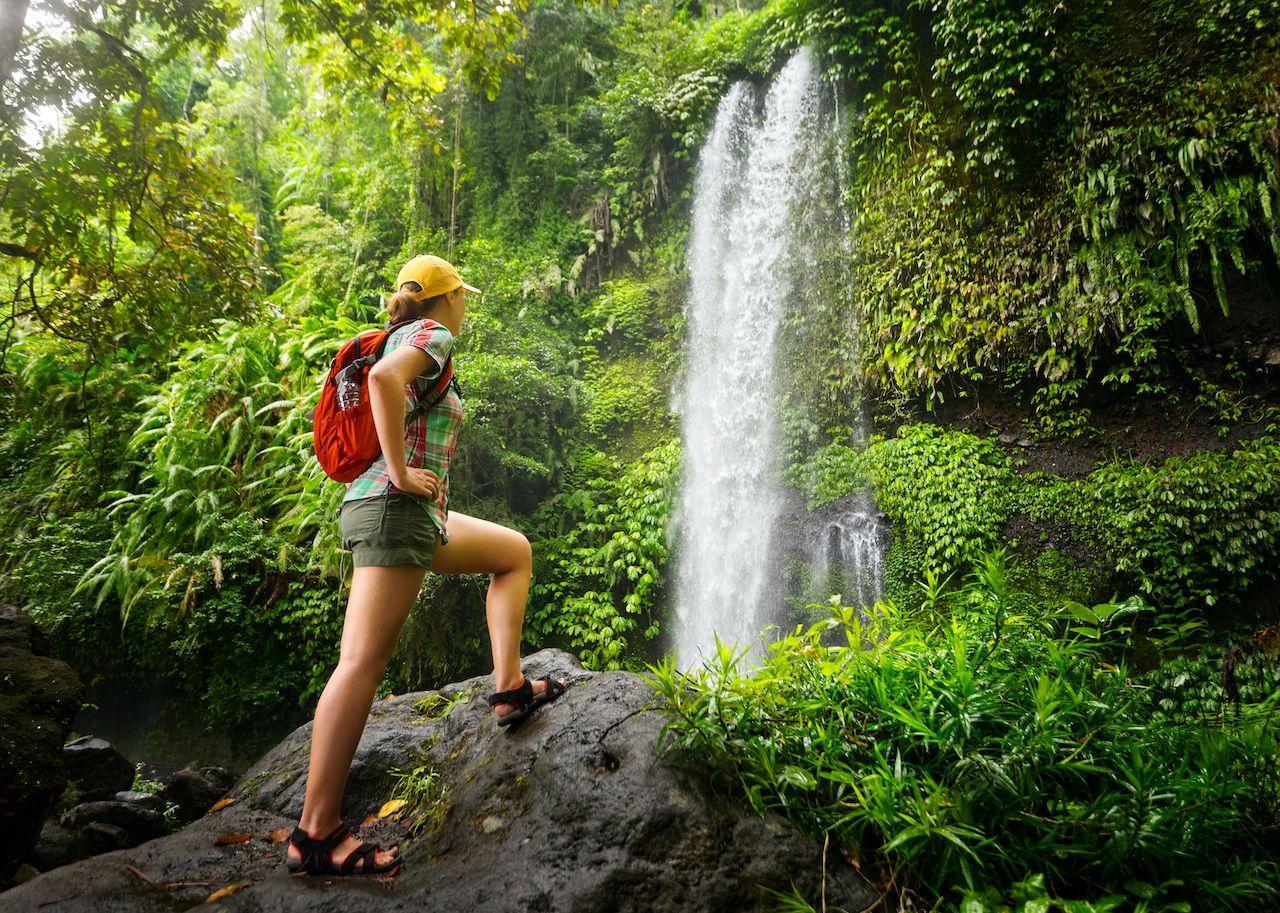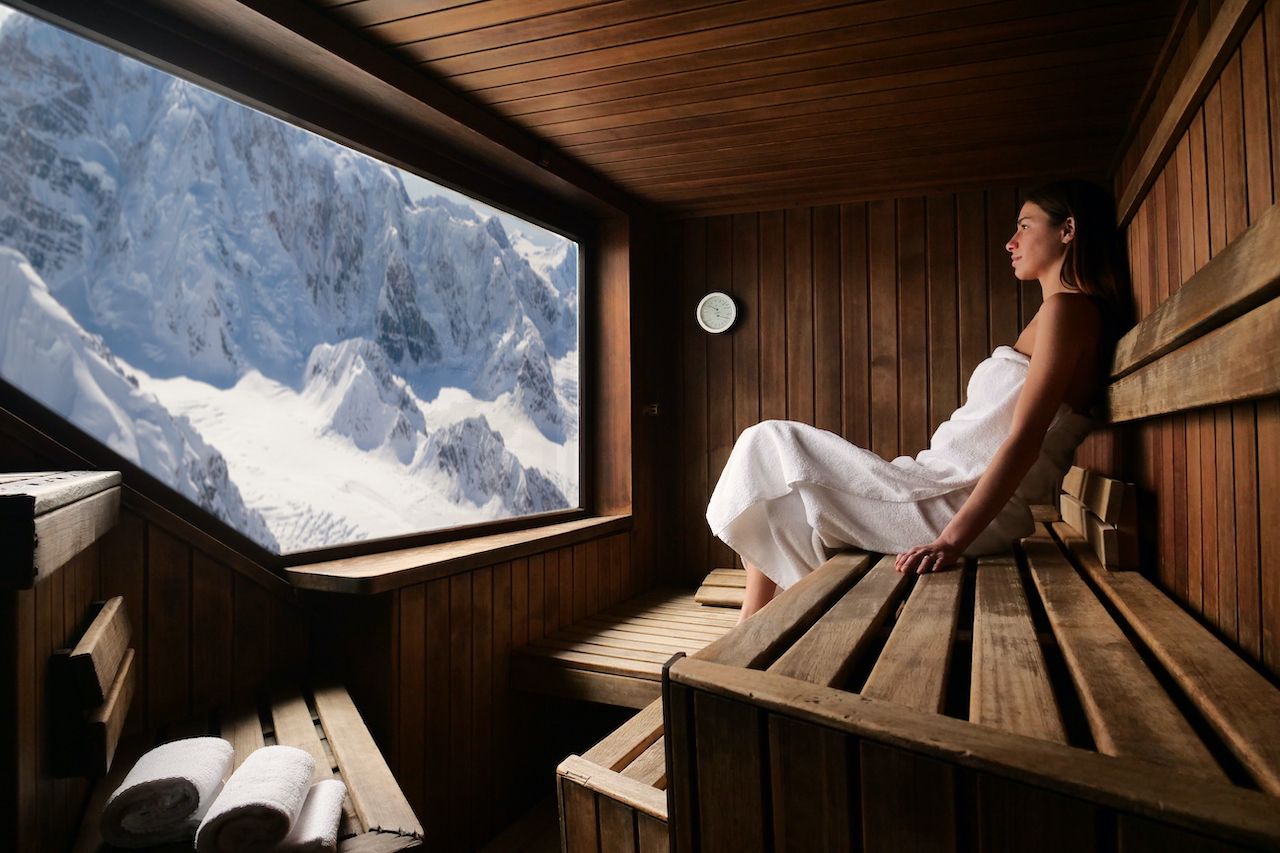Whether hiking Brazil’s humid rainforest, photographing the dry and desolate Namib Desert, or navigating the Norwegian fjords, it’s crucial that outdoor adventurers protect their skin in all conditions. While the ultimate rule of outdoor skincare is to always apply SPF, sun protection alone doesn’t cut it. For those facing multiple microclimates, tips on how to best prepare your skin go beyond the basics. We spoke to Sonya Dakar, dubbed Beverly Hills’ “skin Jedi” and owner of the Sonya Dakar Skin Clinic, to find out how best to protect our skin outdoors, wherever adventure may take us.


How to Protect Your Skin Outdoors, According to an Expert
Dry climate calls for exfoliation and intense hydration.

Photo: soft_light/Shutterstock
Areas with a dry climate such as the desert may cause the skin to appear dehydrated and exaggerate fine lines due to the lack of moisture. The best preparation before embarking on a trek through such a climate is a thorough exfoliation, followed by deep hydration, Dakar explains. The purpose of exfoliation is to clear away dead skin cells and stimulate the regeneration of new ones, which not only creates a vibrant look but also strengthens the barrier of our skin. Look for hydrating products that contain plant-based soothing oils such as flaxseed, porcelain flower, or passionfruit.
Dry skin thrives in humid conditions but oily skin may be triggered.
While dry skin appears plump and dewy in humid conditions, oily, acne-prone skin may be triggered. “Use a cleanser and a hydrator with salicylic acid to clarify. If your skin is oily or breaking out, an acne serum with niacinamide and salicylic acid will keep breakouts at bay,” Dakar says. In addition to cleansing, use a soft-grain exfoliant to decongest pores. Applying a clay-based mask, such as Dakar’s Volcano Mask that contains kaolin (volcanic clay), will help keep your oily skin clear.
Applying SPF is only the first step to a sun-protection routine.

Photo: RobSimonART/Shutterstock
Wearing sun protection when spending extended periods of time outside is key, but that’s only the first step to a proper care regimen. Dakar recommends using an SPF factor of at least 30, noting that CC creams and foundation are not sufficient even if they do contain SPF. The best protection is to avoid direct sunlight between the hours of 10:00 AM and 2:00 PM and to be mindful of whether the intensity of the heat begins to irritate your skin. Prolonged sun exposure may cause the appearance of bumps on the face and body, so make sure to take breaks in the shade.
The active ingredients to look for in an effective sunscreen include avobenzone, octinoxate, octisalate, and oxybenzone, as seen in Dakar’s Daily Shield Anti-aging Sunscreen. Follow up your sun exposure with a hydrating practice as the face will be depleted and need extra nourishment. “This is the time to slather skin with calming anti-inflammatory ingredients like Omega 3, 6, and 9 fatty acids,” she says.
Face balm is the best protection against cold weather and windburns.
Winter’s low temperatures can lead to seasonal irritation that may manifest itself as redness, windburn, inflammation, and sensitivity. Furthermore, skin can suffer from topical dehydration. Dakar says, “You will want to exfoliate 2-3 times a week with a gel-like exfoliant.”
For an extra bit of TLC, use a face balm containing coconut, rosehip, and macadamia seed oil in addition to shea butter. Dakar’s Blue Butterfly Balm blends organic oils to soothe the skin and seal in hydration for up to 24 hours, protecting against the elements.
Keep sensitive skin out of direct sunlight.

Photo: HQuality/Shutterstock
Those with sensitive skin need to add another layer to their routine to make sure that they are adequately protected outdoors. “Stay out of the direct sun at all cost; it can really trigger broken capillaries, rosacea, and dermatitis,” Dakar advises, adding that you should always wear SPF 30 and cool the skin off by placing a cool, damp washcloth on your face. For an extra refreshing sensation, store your face lotions in the fridge — they’ll feel even more relieving when applied.
Pack properly to prevent breakouts.
Adequate breakout protection in the outdoors comes down to two factors: frequent cleansing and smart packing. Dakar calls for face washing at least twice a day, in the morning and at night, while avoiding hand-to-face contact as much as possible throughout the day. You can travel light without having to sacrifice your skincare routine by packing your favorite products into travel-sized reusable containers. Complete TSA-approved kits can be purchased online.
Light packing is an excellent opportunity to declutter your cosmetics drawer and focus on the few key products that will keep your skin clear on the go. One such handy treatment, according to Dakar, is the Blemish Buster or any other product that contains zinc oxide, sodium magnesium silicate, and sodium cocoyl glutamate.